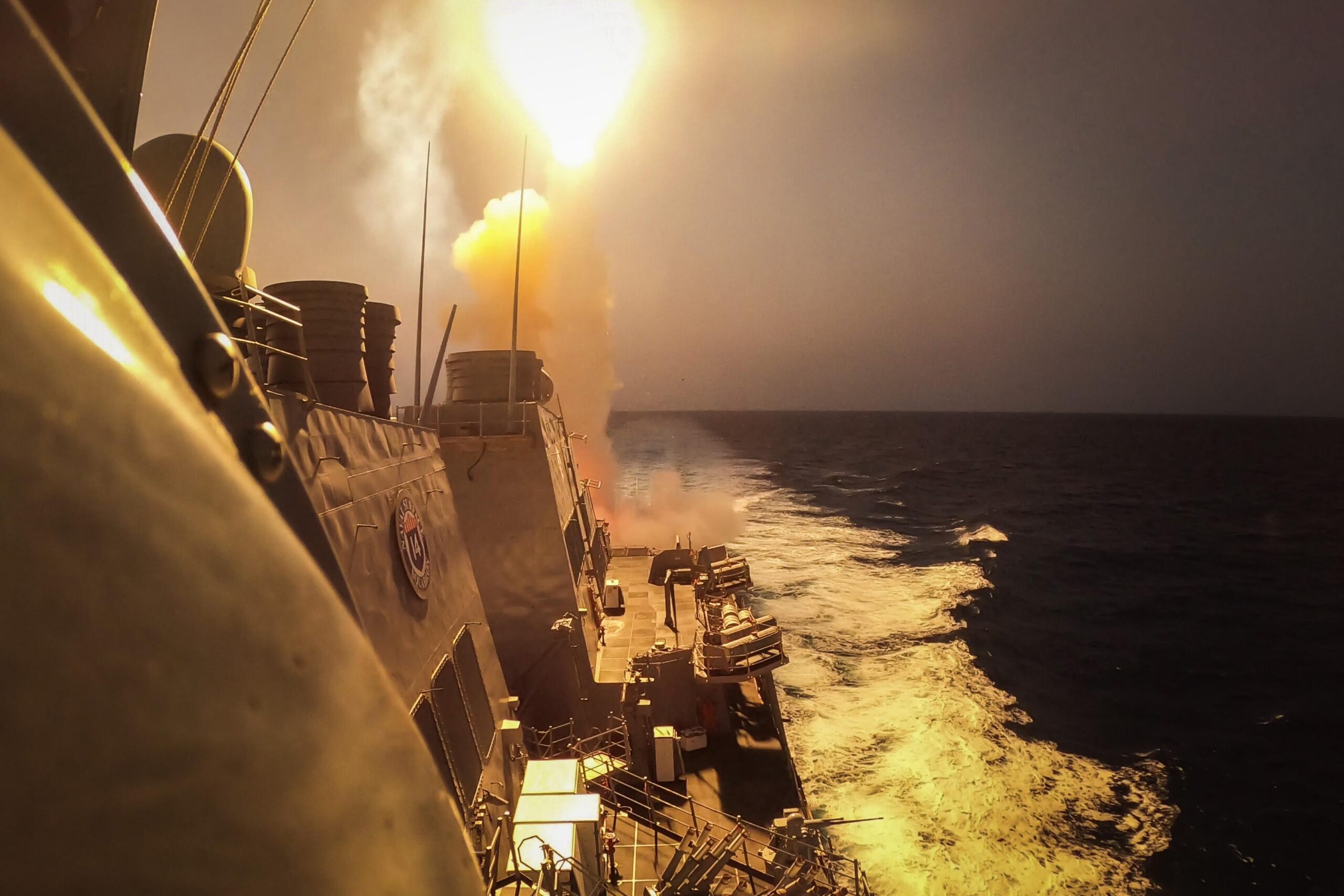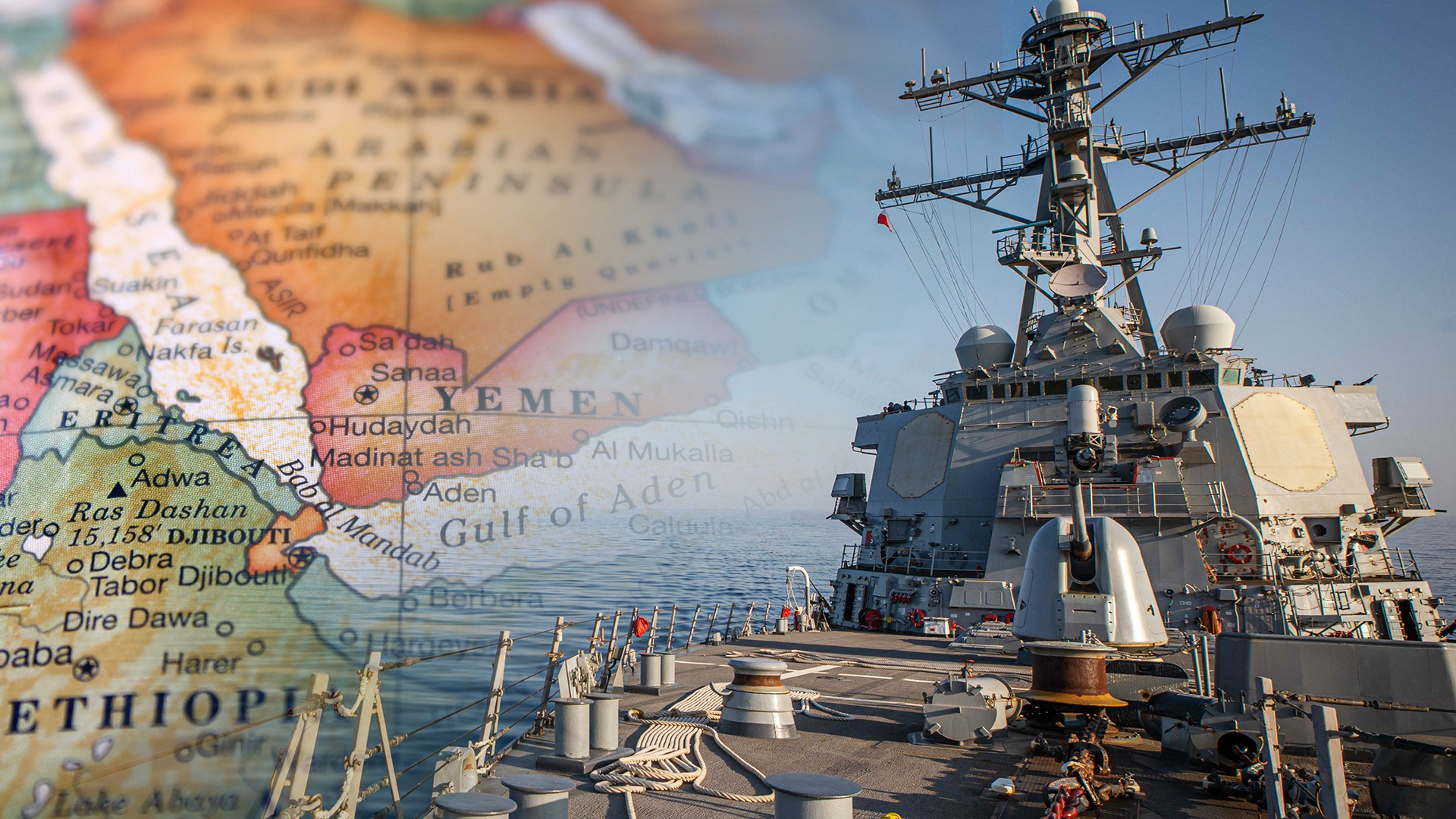My inbox has been flooded with people wanting to know why the United States has not retaliated against Houthi forces in Yemen after repeated anti-ship attacks near the Bab el-Mandeb strait — the critical funnel that connects the Red Sea with the Gulf Of Aden. It’s an entirely fair question and the answer is not as simple as some would make it seem. So let’s dig into it.
One prevailing viewpoint is that the Houthis will ‘only understand force’ and that the United States needs to hit them back. Some declare that this should have happened after the first weapons were launched at ships, but especially now.
The blanket notion of ‘hitting them back’ includes a huge spectrum of potential responses. These range from reactive, proportional responses to much more comprehensive and prolonged campaigns, with various velocities of escalation that can be overlaid on such operations. It’s not like the United States hasn’t done exactly this before and American forces have been kinetically engaged in Yemen on and off for many years. In addition, the U.S. military has provided other forms of support to the Saudi-led coalition against the Houthis in the past. So there is a clear precedent for some sort of military response.
But, at the same time, the current circumstances are certainly different than any in the past and are drastically more complex with much farther-reaching potential consequences. The entire region is on extreme edge. Iran and its Hezbollah proxies in Lebanon have not yet entered the Israel-Hamas conflict with full force, but there is still the possibility they might. Attacks on U.S. forces in Iraq and Syria are also already a near-daily occurrence. The Houthis alone have the ability to drastically increase attacks on U.S. forces in the region, but more on that in a moment.
Simply put, one major spark could set off a much larger fire that could be very challenging to contain.
So, on the one hand, one could argue that a kinetic response is exactly what the Houthis and their Iranian backers desperately want. It very well could be that they want to get the U.S. directly involved and mired in a facet of the Israel-Hamas conflict. Also, as noted earlier, the Houthis have attacked Israel repeatedly in a direct manner, yet the IDF has done nothing. It is fully within the IAF’s reach and capabilities to strike Houthi targets, yet they stand down after dozens of attempted strikes. And yes they have a lot on their plate, but they have the capacity to respond and they don’t. Persuasion by the U.S. could be a factor in the decision, but the fact is that between the U.S. Navy’s screening operations in the Red Sea and Israel’s advanced air defense umbrella, those attacks have been totally impotent — a waste of weaponry.
Attacks much closer to Yemeni shores against defenseless vessels are another story.

The United States certainly could bring the hammer down on the Houthi’s military capabilities. There are plenty of assets in the region to make this a reality, but that would raise the stakes and could quickly expand the crisis.
Houthis have a massive and diverse long-range arsenal that has evolved significantly over the better part of a decade of conflict with the Saudi-led coalition. A major U.S. installation sits just across the strait, less than 100 miles from Yemen, in the form of Camp Lemonnier in Djibouti. This sprawling and ever-growing installation that takes up the southern half of Djibouti’s international airport is where much of the U.S. operations over and around Yemen have been historically based. It houses special operations aircraft, and at times a fighter contingent, as well as other U.S. military and contractor aircraft, and much more. A nearby associated drone base is critical to U.S. operations over Africa, the Red Sea, and the Gulf of Oman. Seeing constant waves of ballistic and cruise missiles as well as drone attacks on these critical installations would be a huge problem, both geopolitically and militarily.

The United States is already stretching its air defense assets to provide coverage to key Middle East bases, having the Horn of Africa become a major missile engagement zone would stretch it even further and put the critical relationship with Camp Lemonnier’s host country at risk. In addition, Houthi forces can turn their long-range arsenal on many other U.S. targets in the region. They may also have a much larger anti-ship capacity that hasn’t been tapped yet.
There is also the question of preparations. Does the U.S. even have the air defense systems it needs in place at these potentially targeted locales that could face waves of Houthi long-range strikes after a U.S. kinetic operation? What about naval assets to screen the area persistently? A single destroyer would not be ideal (this appears to be changing as this is being written). And what happens if attacks are launched on U.S. facilities? What is the response then? How far is the U.S. willing to climb the escalation ladder and how fast is it willing to do so?

Having the U.S. military strike targets in Yemen sounds easy, and it wouldn’t be hard to do operationally, but the escalation that could follow could pose much more challenging tactical problems. Giving the Houthi a ‘bloody nose’ is very different than actually stopping or even significantly curbing their ability to launch anti-ship attacks. Preempting anti-ship missile and drone attacks would require a large, costly, resource-sucking, open-ended operation. This would include persistent intelligence gathering across a very broad area, as well as strike assets at the ready to hit time-sensitive targets based on that real time intelligence. Is the United States prepared to see that through and to what end?
So what do reprisal strikes really offer the United States? Credibility? General deterrence? But does it really work that way for those actually firing the weapons? Does intel say that a kinetic operation will actually deter future Houthi actions? If not, the United States has opened the door to a whole host of issues and commitments that could have remained closed by playing a longer, more robust defensive game.

Then there is the question of why is this America’s job in the first place? Why should the protecting of shipping through the Bab el-Mandeb Strait be the U.S. Navy and American taxpayer’s responsibility? These are fair questions as well, but generally speaking, the U.S. Navy’s mission is to keep sea lanes open, but regional players, especially Egypt have the most to lose here.
Egypt makes nearly $10B a year in revenue from Suez Canal operations. Vessels pay hundreds of thousands of dollars to voyage through the canal, which is seen as a bargain compared to venturing around Africa. If the Bab el-Mandeb becomes too hot to move through, which multiple major shippers already see as the case, what are they going to do to open it up?

Saudi Arabia is another key player with a major stake in keeping the Red Sea navigable. The Saudis have fighting the Houthis for many years now, but that conflict has become a costly endeavor the Kingdom has been eager to extricate itself from. This can only complicate things for the government in Riyadh, which has also been seeking to mend ties with regional rival Iran.
This is where an international coalition could be key. The U.S. military is expected to announce just such an effort this coming week, as The War Zone was first to report. Not only does it distribute responsibilities and costs, but it also is a collective front manifested in real power projection against the Houthi’s actions. If strikes were to be carried out, these too can be shared or at least supported by a multi-national coalition. But even convoy operations that put commercial ships under the direct defensive umbrella of coalition warships could go a long way to keeping shipping safe without entering into a shooting war with Houthi forces. This may already have begun.
China is something of a wildcard here. It too has a base right there in Djibouti and has been active in counter-piracy operations in the Gulf of Aden and off the Horn of Africa. But would it actually become part of such a coalition? I don’t see that happening, but it will set up an interesting geopolitical situation regardless.
So, those are some thoughts on the situation as it stands and why ‘hitting them back’ is a more complicated choice than it may seem. At the same time, the situation is devolving relatively rapidly now and things are clearly about to change. More naval assets will be in the area soon as part of a new maritime security operation. The question of whether that will include kinetic actions or not will likely be answered soon.
Contact the author: Tyler@thedrive.com
